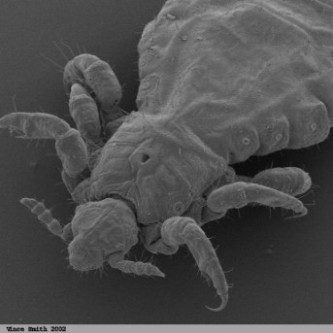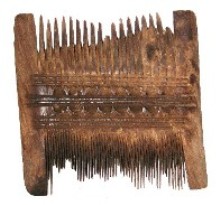The Habitat of Human Lice
Human lice are known to live throughout the hair, skin, and body parts of humans. Since they survive from the blood of their host, they tend to live on the hair, or even clothing of the person. Lice, as nymphs, spend much of their time on the hosts clothing, while feeding primarily takes place while the human is resting or sleeping. They crawl around the clothing, making sure to stay close to their host's body.
Not only do these lice spend a majority of their time on their host, they also can be amongst the bedding or furniture of the human. Although quite unlikely, Pediculus humanus occasionally venture off to various locations while not feeding.
Geographical Characteristics:
 Human
lice know no geographical boundaries. They are found in
regions such as the tropics, to the Arctic Circle. This
indicates that they have traveled around the globe on our early
ancestors, while they spread out into different environments.
It is thought of that pubic human lice evolved when those lice lived
on the hairs around the genitals, which were then cut off for long
periods of time from other lice populating the hairs of the top half
of the body.
Human
lice know no geographical boundaries. They are found in
regions such as the tropics, to the Arctic Circle. This
indicates that they have traveled around the globe on our early
ancestors, while they spread out into different environments.
It is thought of that pubic human lice evolved when those lice lived
on the hairs around the genitals, which were then cut off for long
periods of time from other lice populating the hairs of the top half
of the body.
Upper body lice, found mainly on the head, are more common among the human populations in the temperate to cold regions, where lice are found on clothing when not feeding on their host.
There are even records where Pediculus humanus has been identified in mummy hair from ancient Egypt. Head lice has been mentioned in the documents that date back to early Egypt, China, and India. Specifically, hundreds of lice were found on two mummy heads dating back from the ancient Chiribaya cultures.
Many studies have concluded that the origin of body lice reflects the origin of clothing. It has been found that clothing existed quite a while before the lice evolved to this new ecological niche; in this case the origin of clothing could be much more ancient that the origin of lice themselves. Previously, it has been found that the exploitation of any new ecological niche occurs rapidly after it has become available to the organism. No one has found actual evidence, but this can easily be related to the lice found in mummy hair and other ancient artifacts.
 Switching gears a little bit, human lice are not the only creepy
crawlers that are found in the hair of humans. The organism
Demodex folliculorum hominis is found along the hair
follicles of humans, preferably on the facial skin, eyelashes,
cheeks, and eyebrows. They really are not causing any harm, but
may cause mild irritation. Another animal found on human hair
is Pullex irritans, the human flea. This
organism has been found to also suck on the human blood to survive.
The difference between these fleas and lice are that they do not
spend their entire life on their host. Although lice may also
be found on the clothes of humans, and not specifically on the skin
at all times, human fleas don't spend every minute close to a human.
As you can see, Pediculus humanus are not the only critters
living amongst humans today!
Switching gears a little bit, human lice are not the only creepy
crawlers that are found in the hair of humans. The organism
Demodex folliculorum hominis is found along the hair
follicles of humans, preferably on the facial skin, eyelashes,
cheeks, and eyebrows. They really are not causing any harm, but
may cause mild irritation. Another animal found on human hair
is Pullex irritans, the human flea. This
organism has been found to also suck on the human blood to survive.
The difference between these fleas and lice are that they do not
spend their entire life on their host. Although lice may also
be found on the clothes of humans, and not specifically on the skin
at all times, human fleas don't spend every minute close to a human.
As you can see, Pediculus humanus are not the only critters
living amongst humans today!
Want to learn about the scrumptious food that these crawlers live off of? click here...
